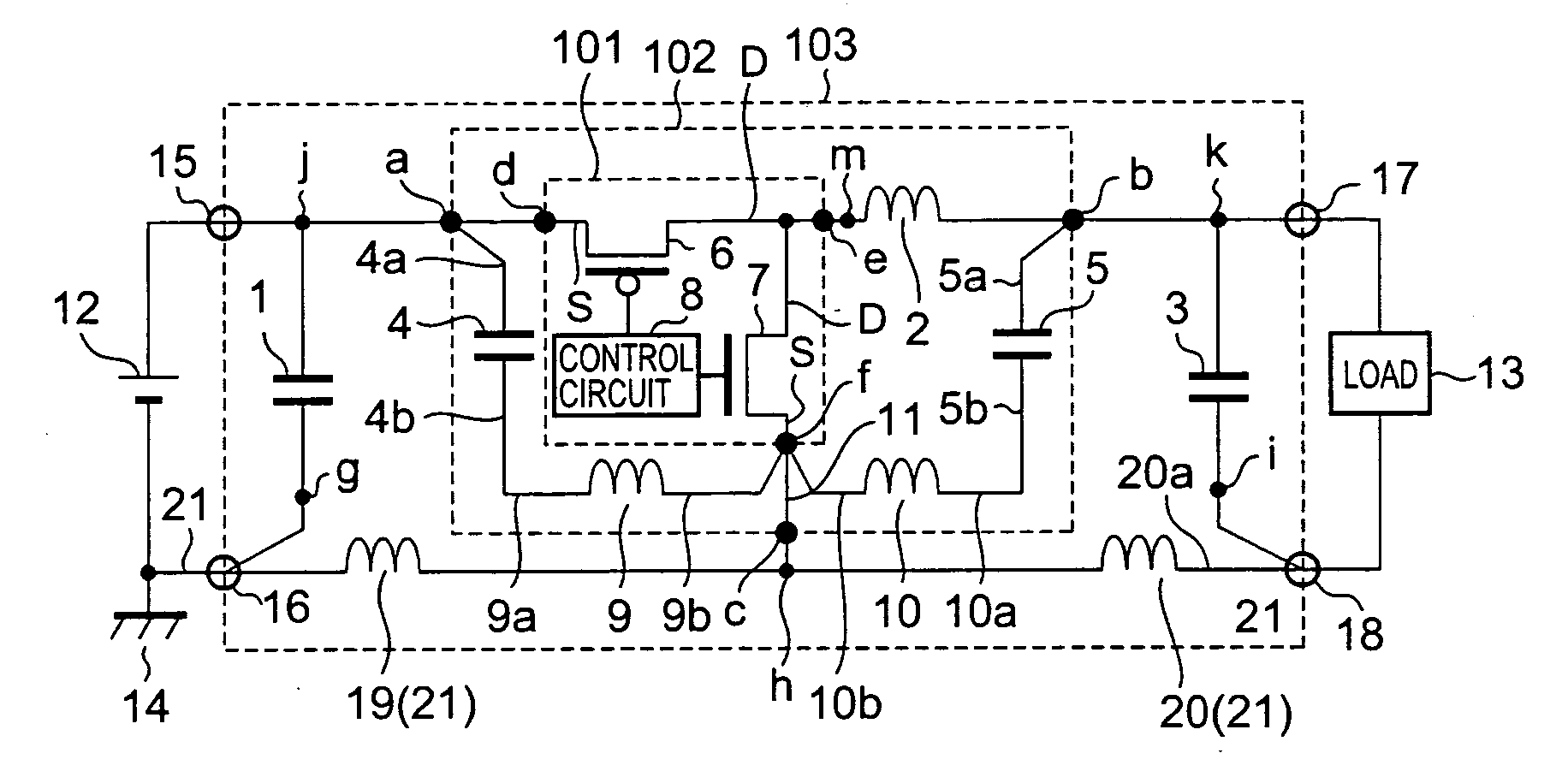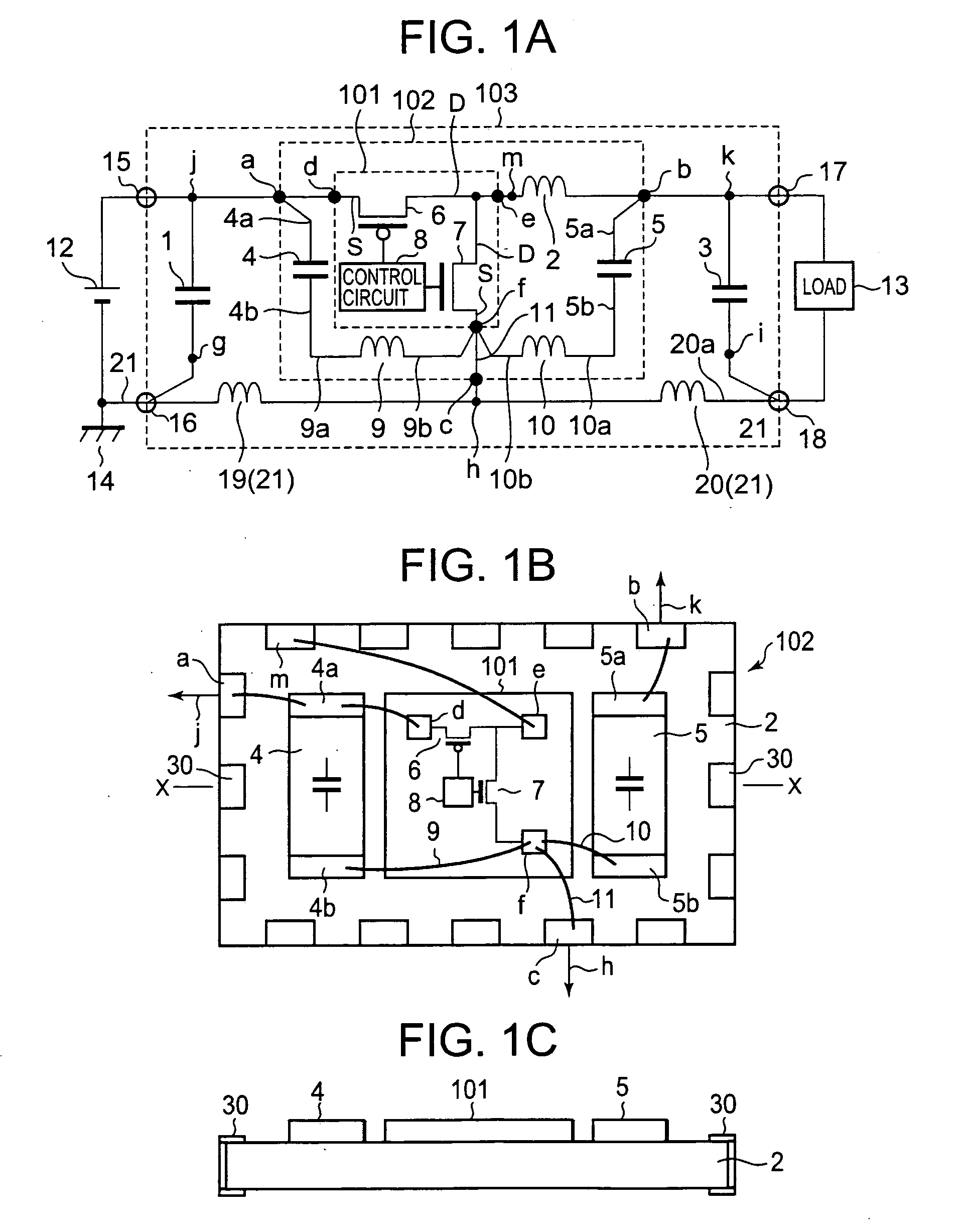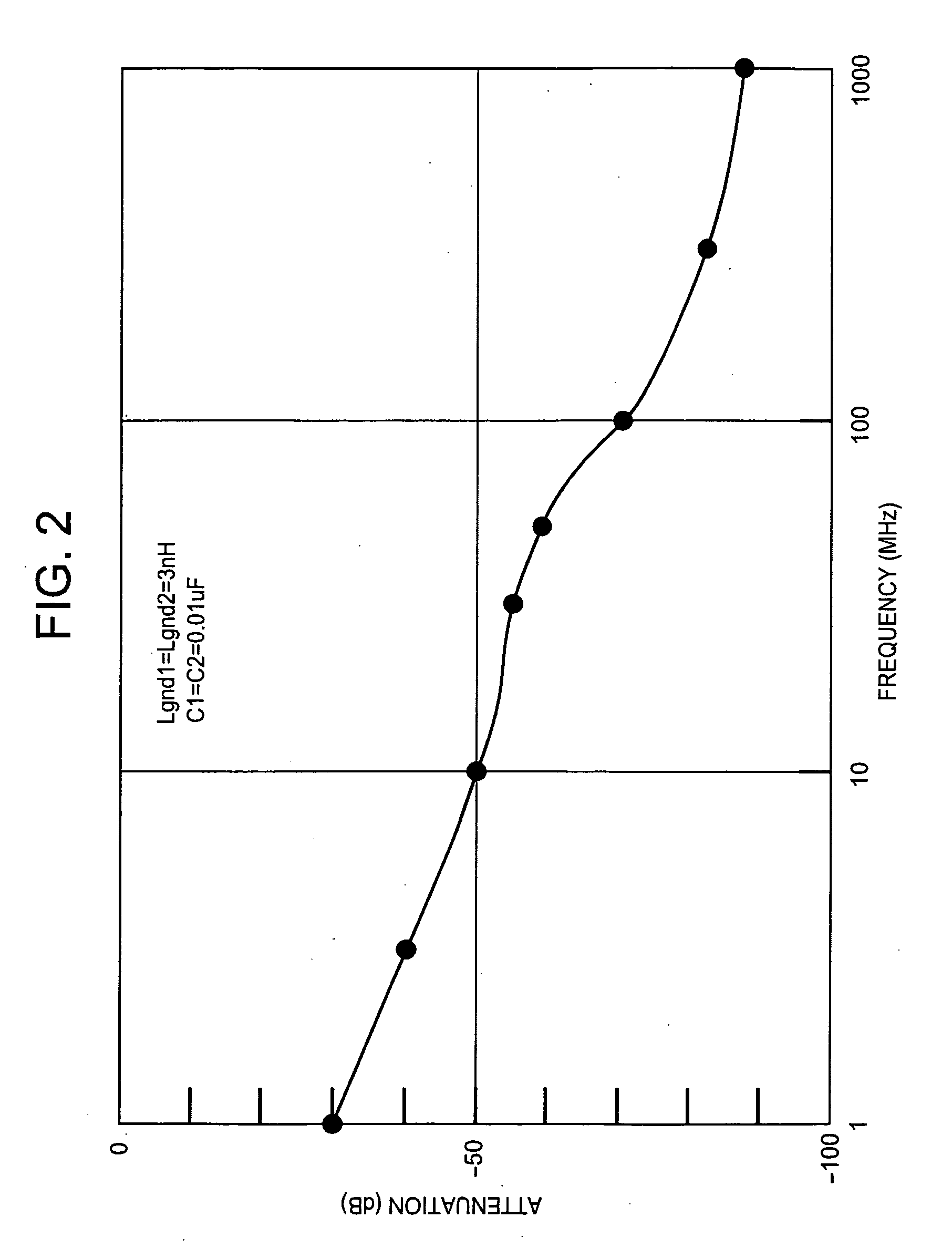Micro-power source module
a micro-power source module and micro-power source technology, applied in the direction of dc source parallel operation, continuous variable inductance/transformer, inductance, etc., can solve the problems of strict restrictions on the space of printed circuit boards, difficult to dispose of all and difficult to dispose of plural pol power sources close to an lsi. , to achieve the effect of reducing the noise that reaches the output terminal, small
- Summary
- Abstract
- Description
- Claims
- Application Information
AI Technical Summary
Benefits of technology
Problems solved by technology
Method used
Image
Examples
embodiment 1
[0050]FIG. 1A is a circuit diagram of important parts of a micro-power source device according to a first embodiment of the invention. FIG. 1B is a plan view of important parts of a micro-power source module according to the first embodiment. FIG. 1C is a sectional view taken along line X-X in FIG. 1B. In FIG. 1A, a micro-power source device 103 (POL power source) is composed of an input capacitor 1, a power source IC 101, an inductor 2, an output capacitor 3, a first noise absorption capacitor 4, and a second noise absorption capacitor 5. A high-potential-side input terminal 15 of the micro-power source device 103, which is connected to a high-potential-side interconnection of an external power source 12, is connected to one terminal j of the input capacitor 1. A ground-side input terminal 16 of the micro-power source device 103, which is connected to a ground 14 of the power source 12, is connected to the other terminal g of the input capacitor 1. The one terminal j of the input c...
embodiment 2
[0055]FIG. 6A is a circuit diagram of important parts of a micro-power source device according to a second embodiment of the invention. FIG. 6B is a plan view of important parts of a micro-power source module according to the second embodiment. FIG. 6C is a sectional view taken along line X-X in FIG. 6B. FIG. 6D is a sectional view of important parts of an integrated capacitor. FIG. 7 is a detailed plan view of an inductor used in the micro-power source module of FIG. 6B. The micro-power source device 108 of FIGS. 6A-6D is different from the micro-power source device 103 of FIGS. 1A-1C in the following points. First, an integrated capacitor 23 as a noise absorption capacitor having a small capacitance on the order of picofarads is formed on the same semiconductor substrate 40 as a power source IC 106 is formed. Second, a divided inductor 22, which is divided at a dividing point r, is used and an intermediate tap q which is connected to the dividing point r is connected to one termin...
embodiment 3
[0061]FIG. 10A is a circuit diagram of important parts of a micro-power source device according to a third embodiment of the invention. FIG. 10B is a plan view of important parts of a micro-power source module according to the third embodiment. FIG. 10C is a sectional view taken along line X-X in FIG. 10B. In this embodiment, a micro-power source module 110 solely constitutes a micro-power source device 111. The micro-power source device 111 according to this embodiment is similar in configuration to the micro-power source device 103 of FIGS. 1A-1C and is different from the latter in that the noise absorption capacitors 4 and 5 are not used and the input capacitor 1 and the output capacitor 3 are mounted on an inductor 27 adjacent to the power source IC 101. In FIGS. 10A-10C, reference numeral 31 denotes a fourth line that connects a terminal 1b of the input capacitor 1 to an input / output terminal 26 (corresponds to the terminal c in FIGS. 1A-1C). Reference numeral 32 denotes a fift...
PUM
 Login to View More
Login to View More Abstract
Description
Claims
Application Information
 Login to View More
Login to View More - R&D
- Intellectual Property
- Life Sciences
- Materials
- Tech Scout
- Unparalleled Data Quality
- Higher Quality Content
- 60% Fewer Hallucinations
Browse by: Latest US Patents, China's latest patents, Technical Efficacy Thesaurus, Application Domain, Technology Topic, Popular Technical Reports.
© 2025 PatSnap. All rights reserved.Legal|Privacy policy|Modern Slavery Act Transparency Statement|Sitemap|About US| Contact US: help@patsnap.com



